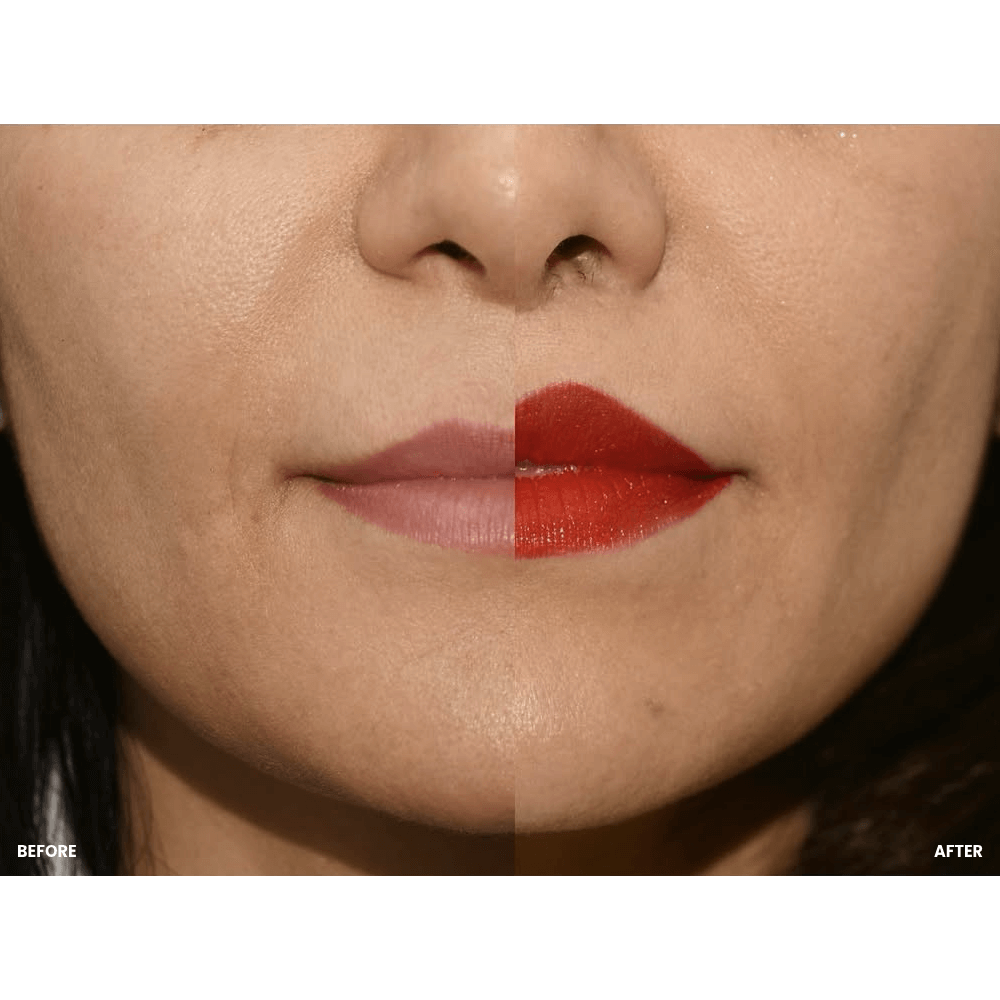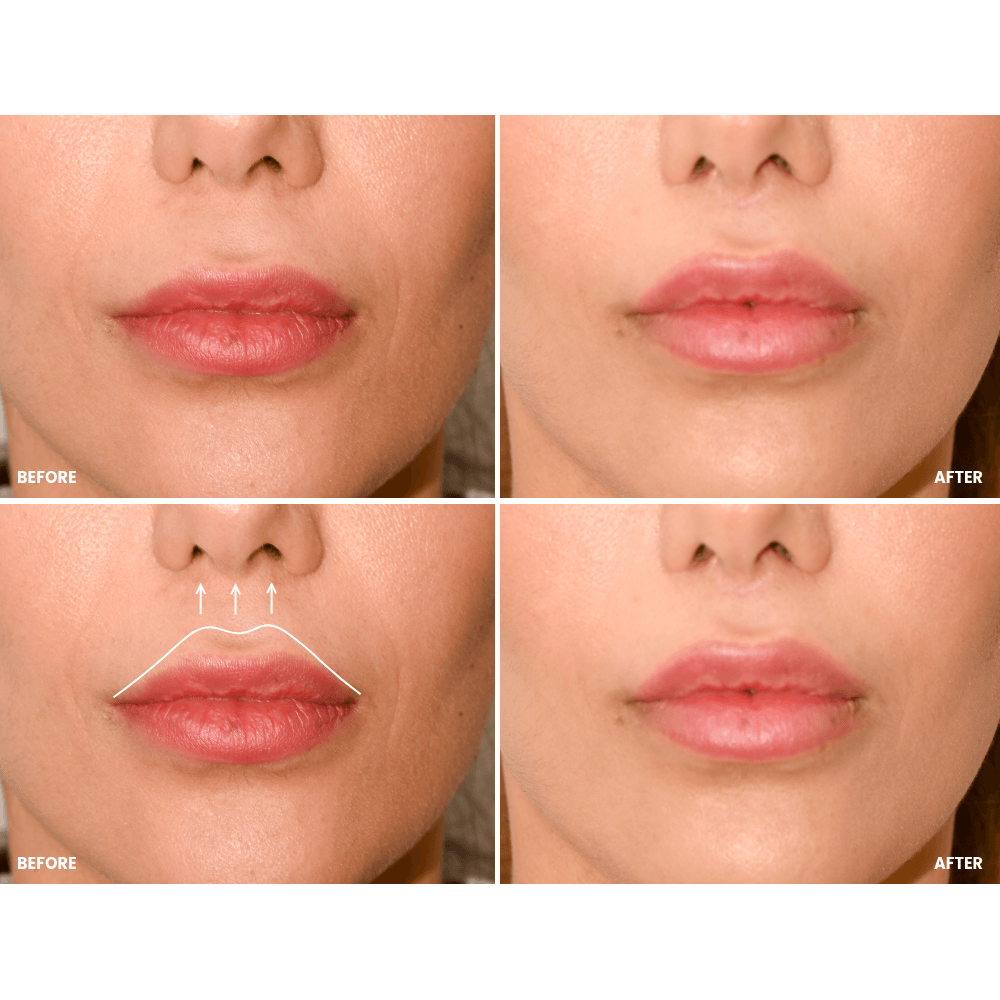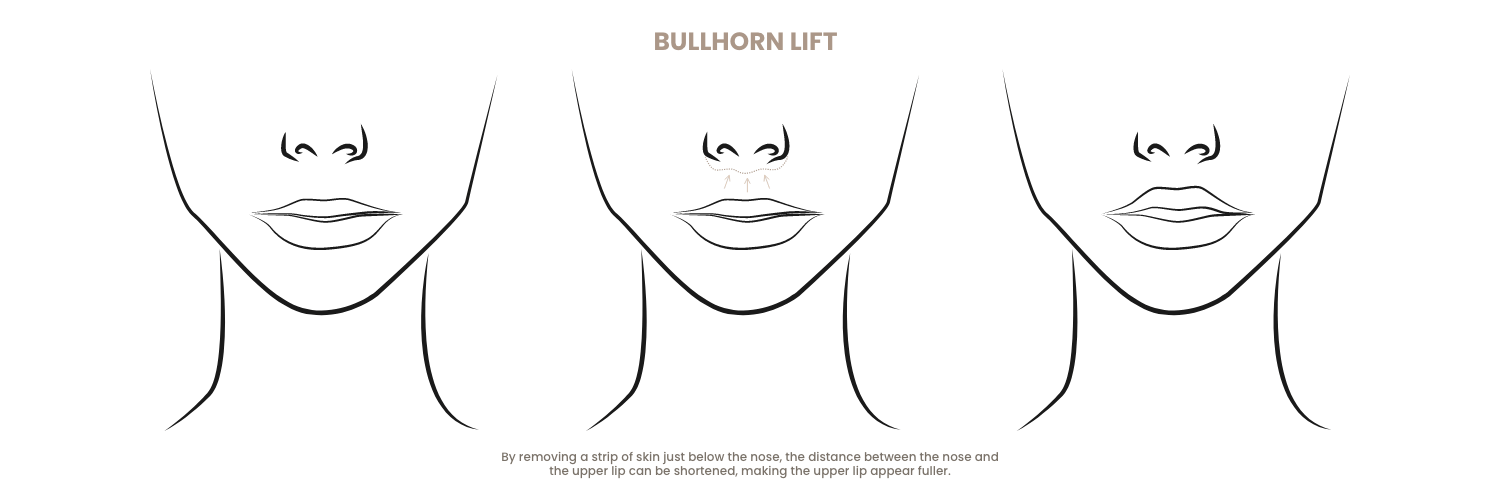When the face ages, three main changes occur
- The skin loses elasticity and becomes wrinkled.
- The connective tissue beneath the skin also loses elasticity. This causes the retaining ligaments (the connective tissue bands that anchor the skin) to stretch, leading to a downward shift of key facial structures. As a result, the midface sags, nasolabial folds become more pronounced, jowls appear, the eyebrows drop, a double chin forms, and the mouth area with the lips descends — noticeably increasing the distance between the base of the nose and the upper lip.
- The subcutaneous fat tissue decreases, making the facial skin thinner and creating visible depressions in several areas.

Bullhorn lift: why and for what purpose?
When considering surgical facial rejuvenation, the goal is naturally to include as many aspects as possible in the overall rejuvenation concept. In modern facelift surgery (a two-layer technique since 1972), the midface, cheeks, and neck are the key elements of the overall concept. Often, the eyes are corrected at the same time, but one should not overlook the loss of subcutaneous fat (autologous fat transfer) as well as the shape, position, and size of the mouth — especially the upper lip (bullhorn lift).
With age, the distance between the columella (base of the nose) and the upper lip increases noticeably, and the upper lip often tilts downward, making the red portion of the lip appear thinner or barely visible from the front. The bullhorn lift is a highly effective measure to rejuvenate the mouth area, either as a standalone procedure or in combination with a facelift. The aim is twofold: to shorten the distance between the base of the nose and the upper lip, and to gently rotate the upper lip upward so that the red lip area becomes more visible again. The bullhorn lift can also be combined with lip augmentation using autologous fat transfer.
Bullhorn lift: how is it performed?
The name “bullhorn lift” comes from the shape of the skin incision made during this procedure: it runs along the lower edge of the nose and actually resembles the horn of a bull — straight and horizontal in the center, curving upward on both sides in a semicircular fashion, just like a bull’s horn.
The procedure itself is not particularly complex, but achieving a good result requires experience and great precision. Otherwise, visible asymmetries can easily occur, the desired degree of upward rotation may not be achieved, or certain areas of the upper lip may not be lifted sufficiently. Lips naturally vary greatly in shape, and depending on which section of the upper lip should be emphasized, careful planning and adjusting the width of the skin strip to be removed allows the desired effect to be achieved — selectively lifting either more of the central or the lateral parts of the upper lip.
The incision runs precisely along the lower edge of the nose, beneath the columella, and extends laterally toward the nostrils. The length of the incision can vary: if it ends at the inner edge of the nostrils, mainly the central portion of the upper lip is lifted; if it extends further outward to the outer edge of the nostrils, the lateral portions of the upper lip are also lifted.
The bullhorn lift cannot be replaced by fillers – it’s about position, not volume
The bullhorn lift is suitable for all patients seeking long-term rejuvenation (as opposed to temporary filler injections) and/or a harmonious enhancement of their mouth and upper lip. Unlike fillers, this method makes the upper lip appear naturally fuller. Many patients report that after the procedure, others perceive their smile as more open and pleasant — naturally enhancing their attractiveness.
An additional benefit of the bullhorn lift is that slightly drooping mouth corners can also be corrected to a limited extent during the procedure.

Bullhorn lift: scars and aftercare
If the patient does not have a tendency toward excessive scar formation (hypertrophic scars, keloids), the bullhorn lift leaves barely visible scars. Proper postoperative scar care is essential — avoiding sun exposure for eight weeks is highly recommended. Sunscreen with SPF 50 is mandatory for up to eight weeks after surgery to prevent adverse scar formation.

Complications from this procedure are fortunately very rare. As in all aesthetic surgery, a distinction is made between medical and result-related complications. Medical complications are limited to postoperative bleeding (almost impossible with correct technique) and infection (extremely rare due to the excellent blood supply in the lip area). Occasionally, wound-healing issues may occur if there is excessive tension.
Result-related complications can never be entirely ruled out — overcorrection, undercorrection, or asymmetries may occur, as well as undesired outcomes caused by inaccurate planning, such as lifting the wrong lip segments (too much lateral or too much central elevation). Postoperative redness and swelling are normal and usually subside within 3–5 days.


